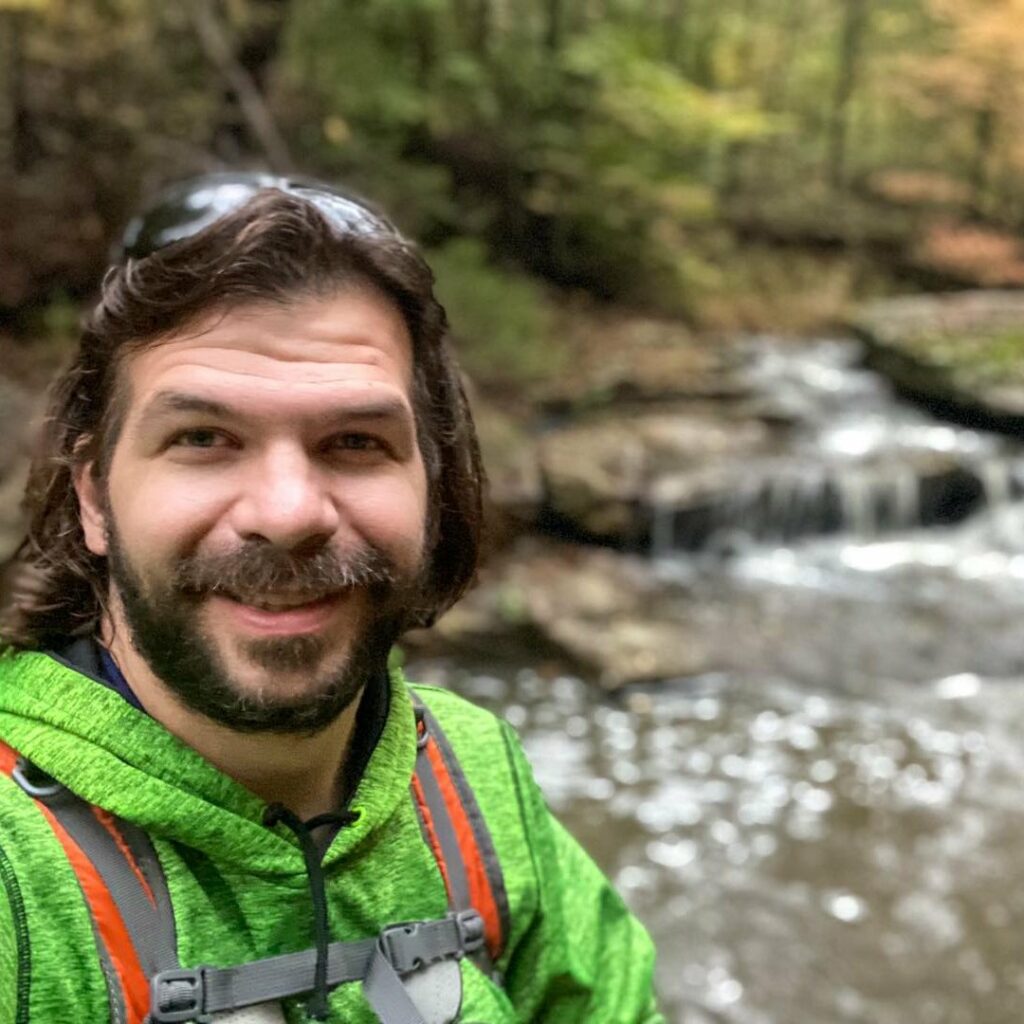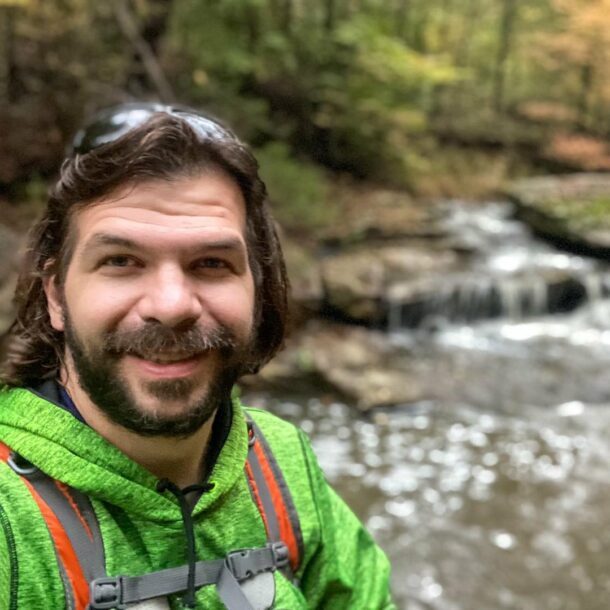Dispersed Camping in the Shawnee National Forest: What You Need to Know Before You Go
Dispersed camping in the Shawnee National Forest offers a unique escape, but without the right preparation, it can quickly turn from a dream into a challenge.
The lack of amenities and unclear regulations can leave even seasoned campers feeling overwhelmed and unprepared.
This guide will help you navigate the ins and outs of dispersed camping in the Shawnee National Forest, from choosing the perfect spot to following essential rules and safety tips.
Discover how to enjoy a peaceful, off-grid adventure while respecting this stunning natural area!
What Is Dispersed Camping in the Shawnee National Forest
Dispersed camping in the Shawnee National Forest is different than other forms of camping that you might be used to.
Dispersed camping is when you “create” your own camping spot or use an off-grid designated spot. Dispersed campsites don’t have amenities like running water, mowed lawns, and electricity. In most cases, to get to dispersed camping sites, you either have to drive on dirt roads or hike to them.
There are different rules and regulations for dispersed camping in the Shawnee National Forest, too.
You can’t go dispersed camping anywhere in the Shawnee National Forest. You have to choose places without designations, like wilderness areas. The Shawnee is full of natural and recreation areas where dispersed camping is not allowed.
It’s important that you Leave No Trace when dispersed camping in the Shawnee National Forest.
In most cases, there are no trash services where you can disperse camp. That means you have to pack out what you pack in. It’s important to follow Leave No Trace essentials when utilizing an area for dispersed camping so that you can leave an area better than you found it.
Rules and Regulations Specific to Shawnee National Forest
There are some rules and regulations that you must follow when disperse camping in the Shawnee National Forest.
Dispersed camping is allowed anywhere in the Shawnee National Forest except for prohibited areas. These prohibited areas include developed recreation areas, natural areas, along lake shores, near streams, or on trails. While hikers and backpackers can camp in designated wilderness areas (not more than 14 days straight), equestrian riders are prohibited from it.
The Forest Service has listed areas that allow dispersed camping within them.
These areas include:
- Camp Cadiz
- Dutchman Lake
- Garden of the Gods Recreation Area (campground only)
- Jackson Falls
- Lake Tecumseh
- Lake of Egypt
- One Horse Gap
- Pennant Bar Openlands
- Tower Rock Campground (campground only)
- Whoopie Cat Lake
- Cedar Lake
- Johnson Creek Recreational Area (campground only)
- Kinkaid Lake
- Turkey Bayou Campground
- Wilderness Areas
Be certain to check for county and National Forest fire restrictions. If a burn ban has been issued for the county or forest where you’re dispersed camping, you will be prohibited from starting any sort of fire. Please ensure that any campfire is cold to the touch before leaving an area.
You might also want to consider other potential problems while disperse camping in the Shawnee National Forest.
Wildlife such as bobcats, occasional bears, snakes, opossums, raccoons, and skunks may be present. It might be a good idea to hang your food up away from your campsite for the night just to be safe. Bears pass through Southern Illinois from time to time, but there is not a confirmed population present.
Stay up to date with the latest US Forest Service Alerts in case the areas you plan to camp in are closed or impacted by an issue.
How to Choose a Dispersed Camping Spot
It’s important to look for the best spot when dispersed camping in the Shawnee National Forest.
You’ll want to choose a flat spot with a very durable surface. It’s highly important that your camp is away from the trail and not close to any water source. Sometimes, you see campsites at trail junctions and creeks in the Shawnee; these sites are actually prohibited camping locations.
You’ll want to inspect your camping site thoroughly before you set it up.
Look for hazardous conditions like dead trees (widow makers) or unstable ground. If you’re using a hammock, make sure the trees you hang it from are healthy and durable enough. Be sure to look for any unseen hazards, such as bee nests or ant hills.
The best areas to choose when dispersed camping in the Shawnee National Forest are wilderness areas.
Wilderness areas typically are vaster, with many options to choose from. We have quite a few to choose from, as well, including Garden of the Gods, Lusk Creek, Burden Falls, Bay Creek, Panther Den, Bald Knob, and Clear Springs Wilderness Areas. These areas will also have fewer people to deal with when overnight camping as long as you camp away from popular spots.
Essential Gear for Dispersed Camping in the Shawnee National Forest
It’s important to bring the right gear with you when dispersed camping in the Shawnee National Forest.
You’ll need to bring some basic camping gear:
- Tent or hammock setup, sleeping bag, sleeping pad.
- Cooking equipment (stove, cookware, fuel).
- Proper clothing and layers for weather conditions.
You’ll also want to have a few safety gear items as well:
- First aid kit, navigation tools (map, compass, GPS), headlamp.
- Food and Water
- Water filtration or purification methods.
You might also consider:
- Trash bags for packing out waste.
- Bear-proof containers just in case one has been spotted in the area.
You should always be hiking with the 10 essentials of hiking no matter if you are camping or not.
Safety Tips for Dispersed Camping in Shawnee National Forest
It’s important to stay safe around wildlife while dispersed camping in the Shawnee National Forest.
Try to get an understanding of what wildlife you may encounter for the season you want to camp. For example, Spring, summer, and fall host many snakes in the Shawnee National Forest, including venomous copperhead, cottonmouth, and timber rattlesnakes. You should also watch for any bear reports as Black Bear have been passing through the area more frequently in these past few years.
It’s important to keep an eye on upcoming weather conditions before going on your camping trip.
Southern Illinois has many diverse weather hazards and conditions. Tornado warnings have been issued during every season and month in the area, and many areas are prone to flash flooding during heavy rains. Southern Illinois also experiences a lot of drought weather, and many creeks and water sources may dry up completely during the summer months.
You should also have a plan of what to do if an emergency situation occurs during your camping trip.
The first thing you should do is always tell someone where you will be camping before you go, just in case you don’t make it back home. You should also have plans for various emergency situations that could likely happen if you’re camping in the Shawnee National Forest. It might also be ideal to carry something like a Personal Locator Beacon just in case you need to be rescued.
The Leave No Trace Principles
It’s important to Leave No Trace when dispersed camping in the Shawnee National Forest.
There are seven principles of Leave No Trace that every dispersed camper should follow. They are:
- Plan and prepare for your trip
- Travel and camp on durable surfaces
- Dispose of waste properly
- Leave what you find
- Minimize campfire impacts
- Respect wildlife
- Be considerate of other users
Try to practice campfire safety and ethics. If you don’t need a campfire, you might choose to use a fuel canister pocket rocket stove instead to reduce campfire impacts. If you have to make a fire, make sure that it is cold to touch and dismantled before you leave your campsite.
It’s important to properly dispose of litter and human waste as well.
Take any trash with you that you produce or find along the trail, even if the trash is not yours. If you have to poop in the woods, make sure you bury the waste. Some experts say you should take used TP with you, but you should at least bury it with your human waste.
Respect all wildlife while you’re camping in the woods. After all, it’s their home, and you’re just visiting.
Do not harm, harass, or handle any wildlife you encounter on the trail. If you encounter wildlife, make sure you give them plenty of room for egress, especially if they could become hazardous to you. If you encounter aggressive animals, try to look bigger and scream at them to scare them away.
Best Practices for an Enjoyable Experience
Make sure you try to have the best experience you can while dispersed camping in the Shawnee National Forest.
It’s best to reduce the amount of noise you add as much as possible, such as avoiding bringing a radio with you. You might also want to look at a light pollution map to determine the darkest spots of the region for better night sky and stargazing opportunities. You should bring a guide with you to identify local flora and fauna and document your trip with photography and video.
Final Thoughts About Dispersed Camping in the Shawnee National Forest
Dispersed camping in the Shawnee National Forest is a wonderful activity. I’ve enjoyed it at multiple locations, including Jackson Falls, Lusk Creek Wilderness, and Panther Den Wilderness. You just want to make sure you use common sense and the tips above to have the best experience possible.
I’d love to hear from you. Tell me where you’ve dispersed camped in the Shawnee National Forest or even Southern Illinois state parks. What was the biggest lesson you took from your first camping trip? Mine was to make sure I packed more water than I needed.
If you’ve enjoyed this article, please consider sharing it with other hikers you know. You could also leave me a one-time tip for writing it or even become a monthly supporter on my Patreon Page.
I have a few great free offers you should know about, too. Join The Hiking Forum, a free hiking and backpacking discussion forum, to talk about hiking all over the world. Subscribe to my free monthly newsletter for even more hiking tips, resources, and upcoming local events.
And until next time, I’ll see you on the trail.

Shawn Gossman
Founder, Hiking with Shawn
Howdy folks! My name is Shawn Gossman and I founded Hiking with Shawn. I’m an avid hiker, cyclist and outdoorsman here in the Shawnee National Forest. I was born and raised in Southern Illinois and never want to leave. Click here to learn more about Shawn Gossman





